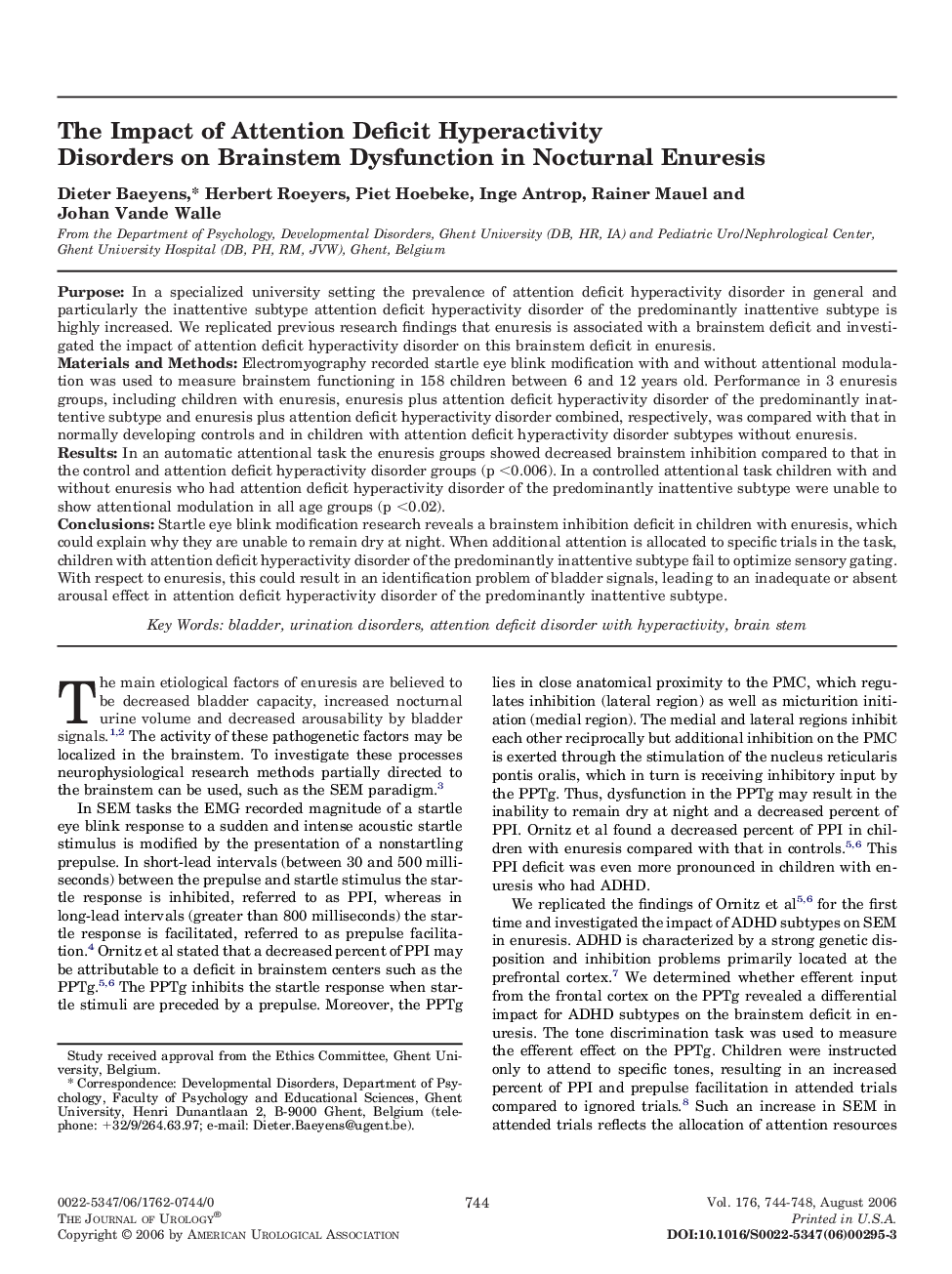| Article ID | Journal | Published Year | Pages | File Type |
|---|---|---|---|---|
| 3879575 | The Journal of Urology | 2006 | 5 Pages |
PurposeIn a specialized university setting the prevalence of attention deficit hyperactivity disorder in general and particularly the inattentive subtype attention deficit hyperactivity disorder of the predominantly inattentive subtype is highly increased. We replicated previous research findings that enuresis is associated with a brainstem deficit and investigated the impact of attention deficit hyperactivity disorder on this brainstem deficit in enuresis.Materials and MethodsElectromyography recorded startle eye blink modification with and without attentional modulation was used to measure brainstem functioning in 158 children between 6 and 12 years old. Performance in 3 enuresis groups, including children with enuresis, enuresis plus attention deficit hyperactivity disorder of the predominantly inattentive subtype and enuresis plus attention deficit hyperactivity disorder combined, respectively, was compared with that in normally developing controls and in children with attention deficit hyperactivity disorder subtypes without enuresis.ResultsIn an automatic attentional task the enuresis groups showed decreased brainstem inhibition compared to that in the control and attention deficit hyperactivity disorder groups (p <0.006). In a controlled attentional task children with and without enuresis who had attention deficit hyperactivity disorder of the predominantly inattentive subtype were unable to show attentional modulation in all age groups (p <0.02).ConclusionsStartle eye blink modification research reveals a brainstem inhibition deficit in children with enuresis, which could explain why they are unable to remain dry at night. When additional attention is allocated to specific trials in the task, children with attention deficit hyperactivity disorder of the predominantly inattentive subtype fail to optimize sensory gating. With respect to enuresis, this could result in an identification problem of bladder signals, leading to an inadequate or absent arousal effect in attention deficit hyperactivity disorder of the predominantly inattentive subtype.
